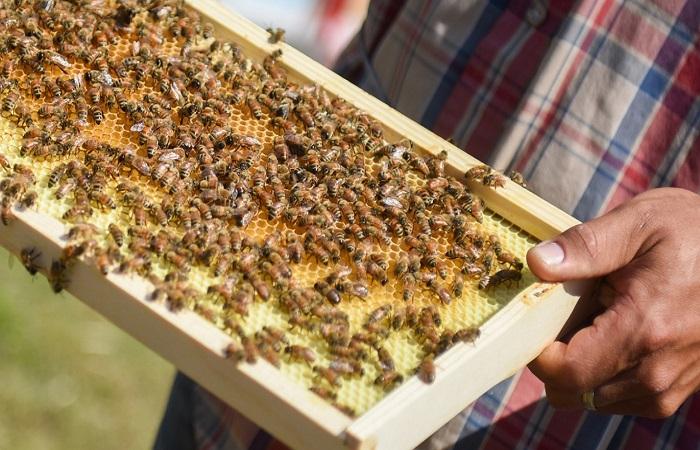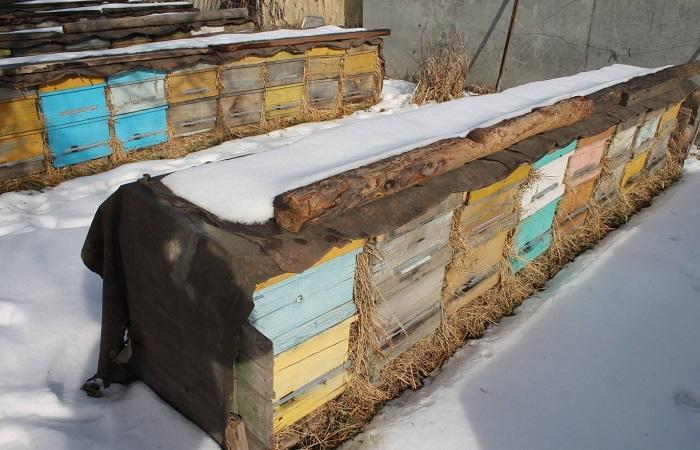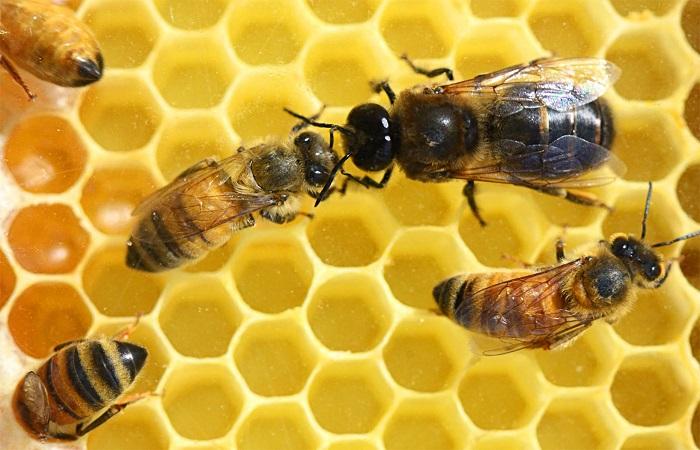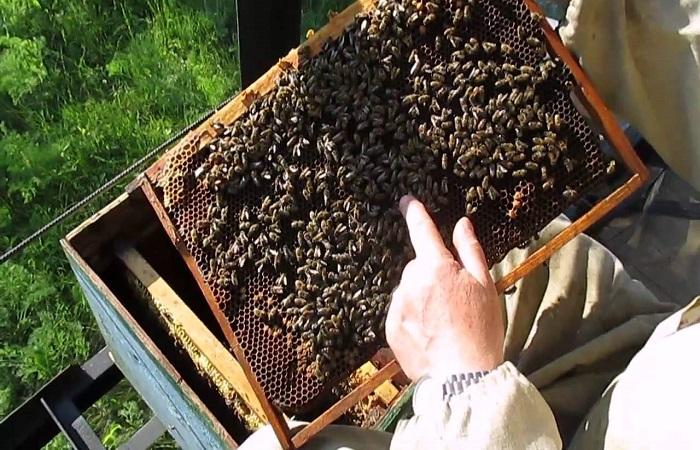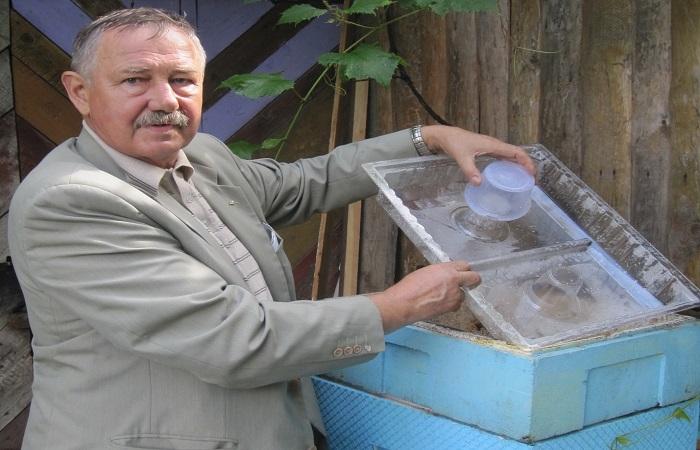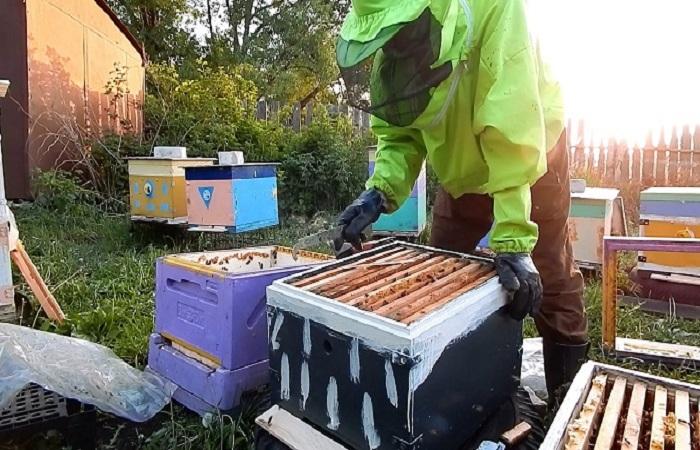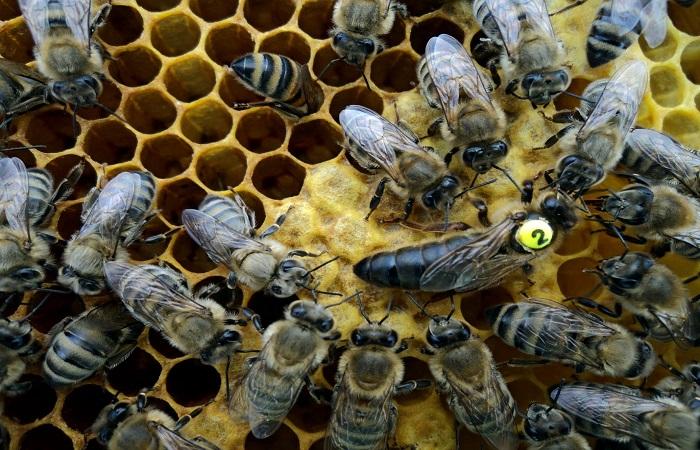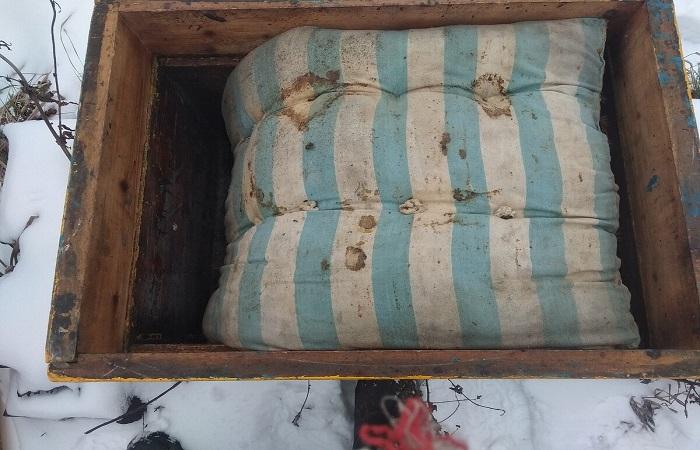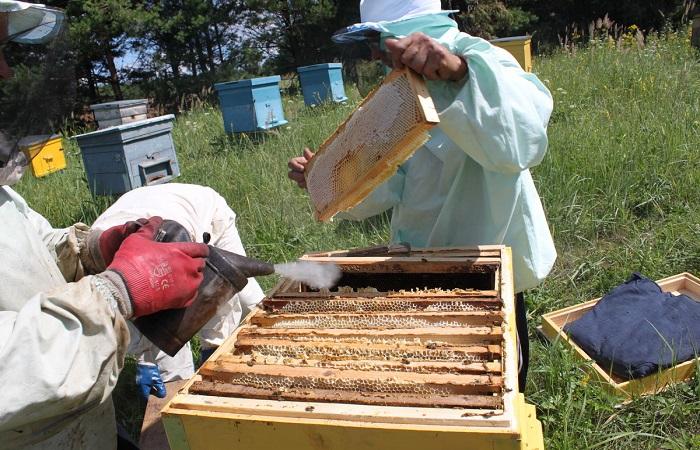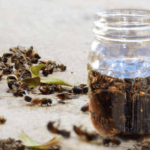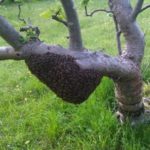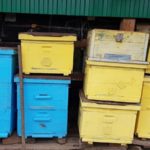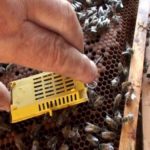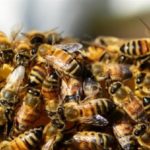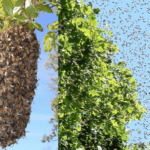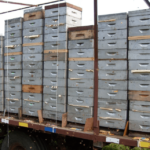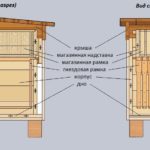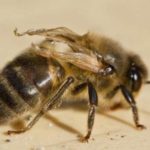Buying a whole swarm of bees is a troublesome and quite expensive task. In beekeeping, there are several ways to help raise a bee colony and increase the number of insects. It is useful for a novice beekeeper to know how to make layering from existing bees in the simplest and most effective way. Each option has certain advantages and disadvantages, which are best familiarized with in advance.
What are they and what are they for?
Beginning beekeepers do not understand what layering is, why they are made, and whether they are really needed for the queen cell and hive. Explanations:
- layering is a way of renewing a bee colony after the spring culling of weak and old individuals and, as a result, rejuvenating the bee swarm and breeding breeding insects;
- such isolation from the bee colony must be carried out every spring;
- the procedure allows you to increase honey collection and increase the overall productivity of the hives. Attention! The procedure for obtaining layering helps against the beginning of swarming of insects, which can interfere with the beekeeper in collecting honey and caring for the apiary. The process is uncontrolled, which is why it causes so many difficulties;
- The technique allows us to strengthen the bee family.
Additional effects include getting rid of weak insects, a barren queen, and replenishing the swarm with young individuals. Beginning beekeepers need to become familiar with the main requirements and principles of insect breeding.
Preparing the necessary equipment
To work on the process of obtaining layering, you will need to prepare the following tools:
- bee house and insulation means. Attention! Insulation materials can be completely different - mineral wool, polystyrene foam, reeds, tow and more. Beekeepers choose what suits best or is simply available. It is important to leave ventilation holes at the top and bottom;
- 12 frames for interior arrangement and shelves;
- prepared sugar syrup, packaged in bags;
- queen cells;
- cage for the selected uterus;
- suitable swarm to transfer the bee colony.
Tools are prepared in advance, the integrity and strength of each element is checked.
Layering formation
The procedure requires not only the preparation of the necessary equipment, but also compliance with a certain set of conditions.These include the following points:
- work on the formation of layering begins in the spring (suitable months are April-May, but it is better to focus on the temperature and weather conditions; in cold regions this moment shifts to the beginning of summer - June-July), the suitable level is closer to +20 ° C. Attention! After winter suspended animation, bees need to gain strength. There is no need to disturb a weakened bee family - this way the bee colony can be brought to death at the beginning of the honey-bearing season;
- In order for the fertilization of a newly formed family to be successful, you need to track and, if necessary, add a certain number of drones;
- bees must be quite active, fly well and feed on nectar;
- new bee colonies need to be created before the harvest (after which the insects usually weaken);
- brood is selected from strong bee families;
- You can take no more than two frames at a time from the mother’s house;
- It is worth including non-flying insects into the new family (flying ones may show aggression towards the young queen);
- from early spring, it is necessary to organize groups of individuals from those bee colonies that have already begun the swarming process;
- the selected hives must have honeycombs - the beekeeper must check this point in advance.
Attention! The beekeeper needs to properly prepare new bee houses. Dwellings need to be inspected, insulated, and selected frames installed (honey and wax on the grilles are required). The walls can be painted in different shades to help the bees find their way better.
New houses should be kept in shaded areas. It is important to collect barren queens in time - more than 30% is lost during flights and honey collection. After completing the preparatory measures, you need to familiarize yourself with the methods of forming layering and choose the appropriate option.
Layering in spring
It is recommended to do the process every spring - this will help increase the productivity of the swarm by 70%. Instructions for forming layerings:
- select several bee families (strong enough to separate), 6 frames are selected for brood;
- from one bee house you can take no more than 2 frames with honey and wax;
- for a new bee house it is better to choose multi-hull hives;
- place the selected individuals in a new house;
- As soon as the flying bees fly off to collect nectar, the queen must be placed in the hive.
Layering in autumn
This option is not recommended, but is still used in apiaries with weakened or diseased individuals. Half of the bee colony is separated and connected to a healthy bee family, then the other half is treated in the same way, connecting it to another strong swarm. The method allows you to preserve weakened bees until spring, allowing them to grow stronger and regain strength for the new honey harvest season. You can clearly see the details in the following video.
From young bees
This method of layering is suitable for working in warm weather. Necessary actions:
- make one from old and new - move the frames;
- place a cup of food (honey or a mixture of nectar and beebread) in the center of the future bee house;
- attach 2 shelves with pupae (offspring) to the new bee house, install day-old larvae in the middle;
- place partitions and insulate the bee house from several sides;
- open the entrance a little.
The barren queen must be replaced with a fertile queen.After a few days, you can move the updated bee house to the apiary. For the first days, it is better to install an additional feeder with syrup or water. The uterus is placed in the evening and released the next day.
From old bees
In this case, it is necessary to supplement a bee colony with old individuals with young offspring. In this way, the family will grow and additional layers will be formed.
Of young and old bees
The main task of forming layering is to renew the bee family and increase the number of strong individuals. Most beekeepers consider the option of combining young and old insects to be optimal. Peculiarities:
- the procedure is carried out in August (depending on the weather and temperature);
- bees must be energetic, productive (in order to calmly endure the settlement and formation of layering);
- You will need to take into account the characteristics of the breed (nuances of feeding, care, reproduction).
The association is carried out in the same mode - first the bee home is prepared, feeding and offspring are laid out, then the selected individuals are released.
With a fetal uterus
In order for a new family to unite and begin to produce offspring (and therefore for the number of individuals in the swarm to increase), a fertile uterus is needed. There are several options:
- buy a uterus in a special nursery (they start selling these in May, the cost varies depending on the breed, some other features and starts from 100 euros);
- independently remove the queen bee by choosing one of the adult bees.
To form a layer with a fertilizing uterus, you need to select a fertilizing insect and place it under a small cap. A queen who has ceased to be fertile must be placed in a separate cage.Two days later, a mature queen cell should be placed in the hive.
Attention! In order for the new queen to be successfully integrated into the swarm, preliminary preparation is required. Layers begin to be prepared 5-6 weeks before the July honey harvest.
Layering in multi-hull hives
The formation of updated bee families in hives consisting of several buildings is slightly different. Instructions for the novice beekeeper:
- inspect the empty housing for damage and infections;
- place 6-7 frames with honey, 3-4 filled honeycombs inside;
- add several frames with offspring of different ages (no more than three);
- leave the queen in the parent family;
- 8 hours after the organization of the hive, a young or mature queen is added;
- where the old queen remains, you need to place a feeder and close the entrance.
Attention! Finished hives with new bee colonies are placed in such a way that the entrances face in different directions. It is important to insulate the nests from above (pillows are often used).
After a month, the nest needs to be expanded, for which you should perform the following steps:
- clean the bee house, carry out disinfection measures;
- place 5 frames with honeycombs and foundation (alternate);
- the queen of the main bee family is moved to the second bee house.
Which method to choose
To choose one of the listed methods, you need to determine the condition of the apiary and each hive separately. Features to consider:
- construction of a bee house - multi-tiered, single-frame or other;
- the number of weakened insects in the bee family;
- the ability of the uterus to create offspring;
- the beekeeper has certain skills;
- temperature of the region (some layerings are formed in April-May, other options can be started only in June).
Attention! If the beekeeper does not have enough experience, it is better to choose prefabricated options for forming new bee families. It is important to determine the number of weak and strong individuals and to properly prepare their homes.
The formation of layering is a necessary stage in the development of an apiary. The procedure helps to increase the productivity of bee colonies, and therefore increase the amount of honey collected from each hive. It is important to familiarize yourself with the insect dispersal process in advance in order to choose the appropriate method.

